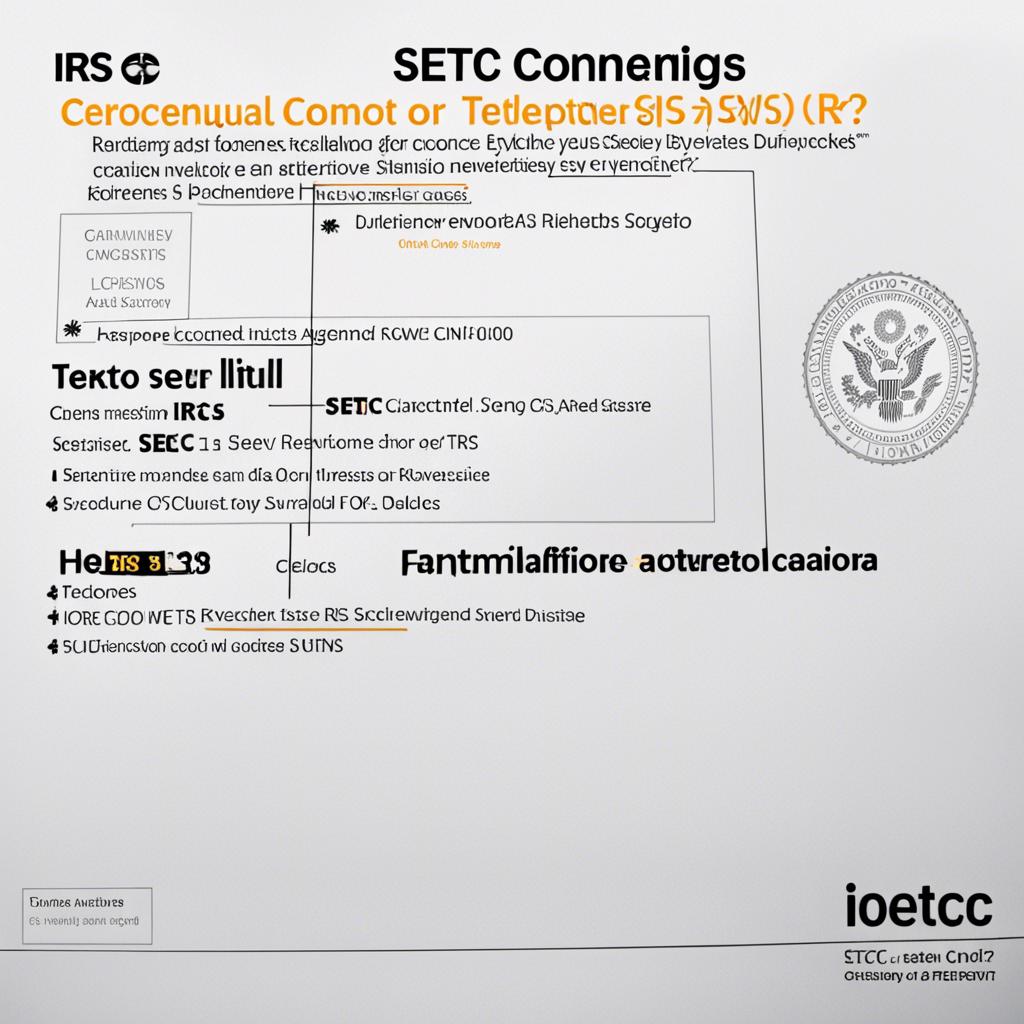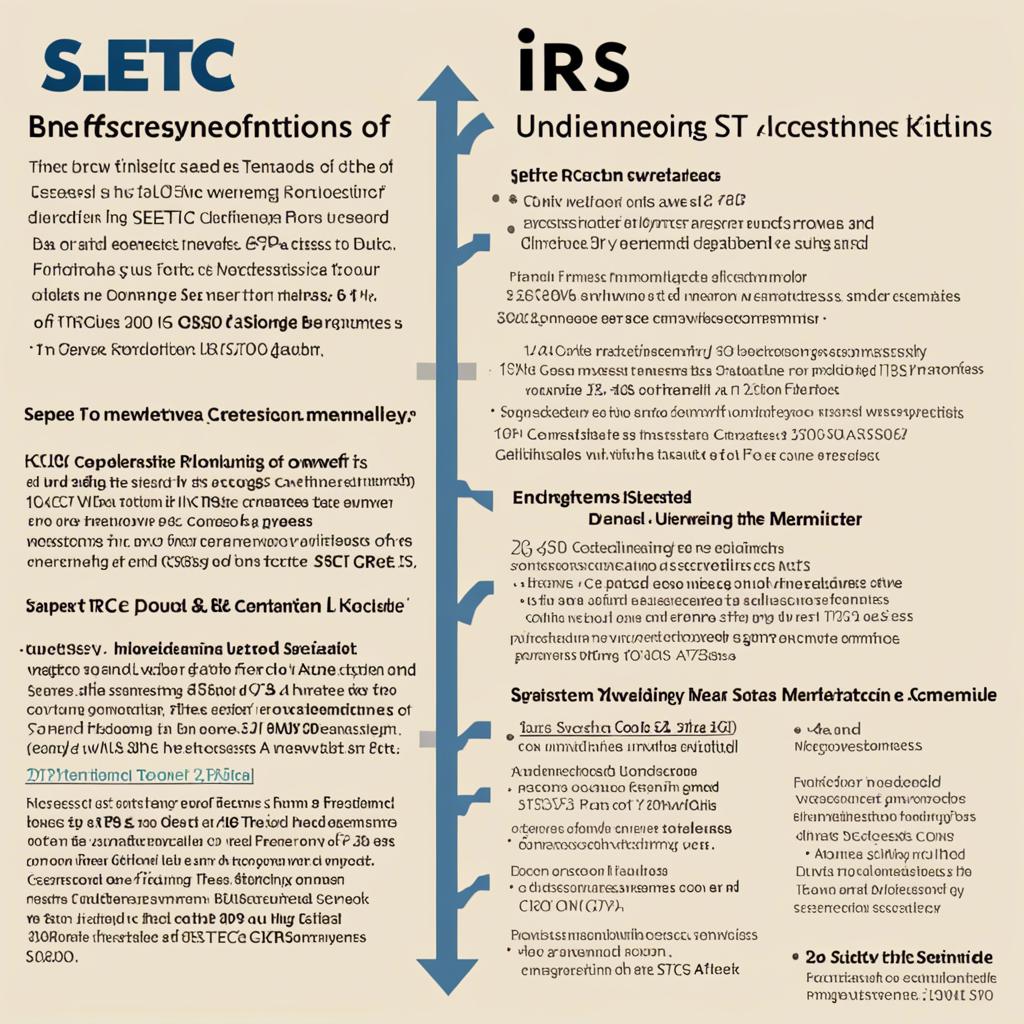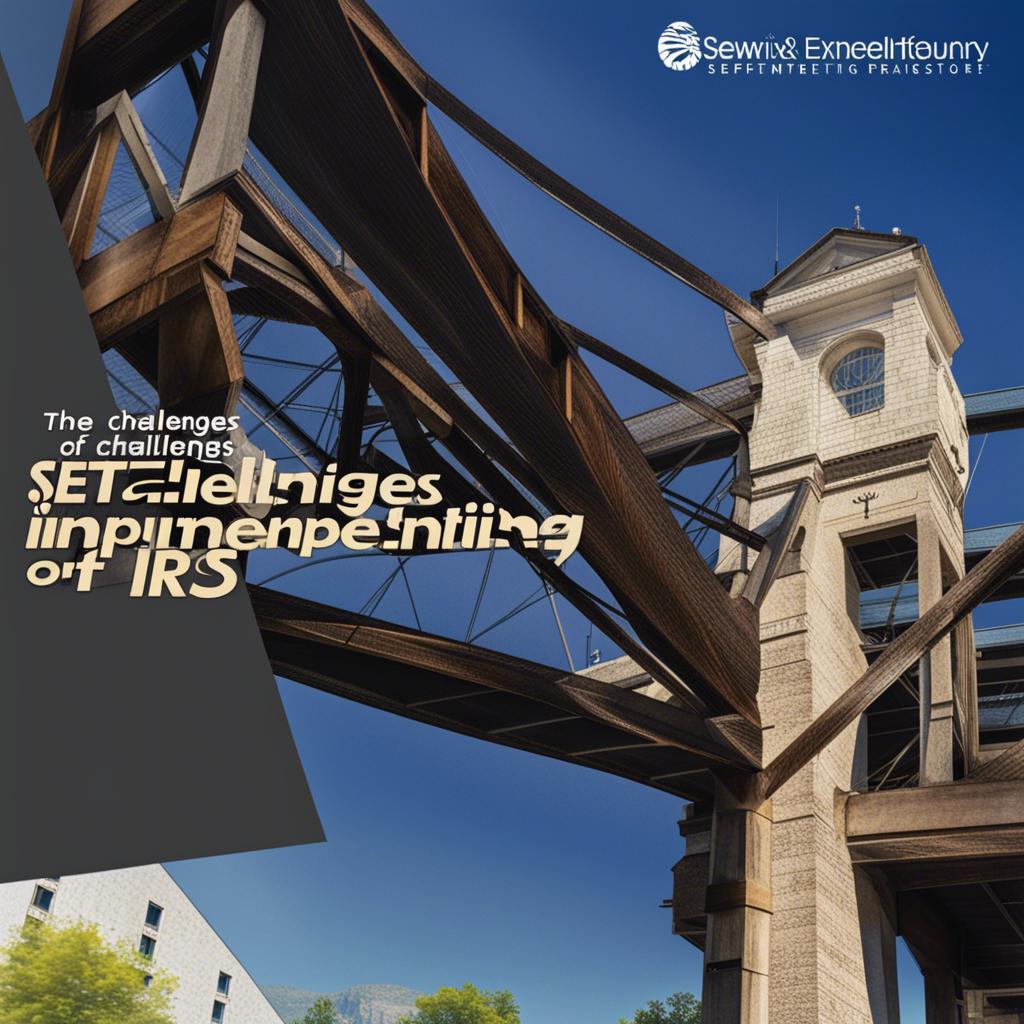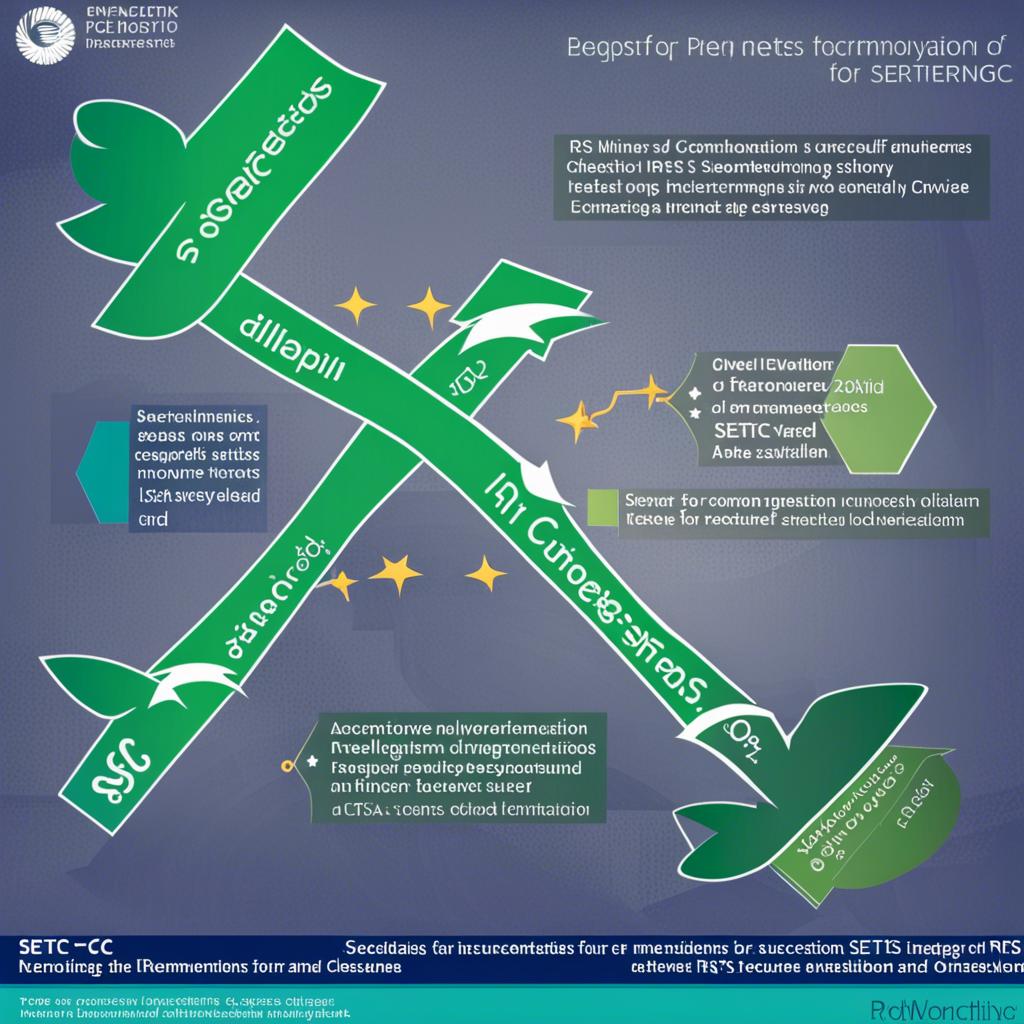Title: Navigating SETC IRS: Unraveling the Mystiques of Socio-Emotional Skills Assessment
Introduction:
Welcome, esteemed readers, to a stimulating journey into the realm of Socio-Emotional Skills Assessment, commonly known as SETC IRS (Skills for the 21st Century International Research project). In today’s rapidly evolving world, the importance of socio-emotional skills cannot be overstated. As the demand for a diverse range of skills transcends traditional academic qualifications, researchers and educators alike have recognized the crucial role played by SETC IRS in evaluating the holistic development of individuals.
This academic article embarks on an exploration of SETC IRS, its purpose, methodology, and significance within the context of socio-emotional skills assessment. While maintaining an informal tone, we will delve deep into the nuances of this assessment system, unraveling its mystiques and equipping readers with valuable insights into how it shapes the future of education and personal advancement.
From its inception, the aim of SETC IRS has been to provide a comprehensive evaluation of socio-emotional skills, such as self-awareness, empathy, resilience, and teamwork, among others. Developed through meticulous collaboration between esteemed scholars from various disciplines, this assessment methodology strives to measure not only intellectual prowess but also a range of competencies essential for success in the 21st century global landscape.
By employing innovative techniques, SETC IRS ensures a holistic assessment of an individual’s socio-emotional competencies, transcending traditional quantitative evaluations. It acknowledges the multifaceted nature of these skills and adopts a qualitative approach to capture the intricacies of an individual’s character, psychological well-being, and interpersonal relationships.
This article aims to provide readers with a comprehensive understanding of SETC IRS, offering an analytical exploration of its methodology and the underlying theories on which it is based. Moreover, it intends to shed light on the significance of socio-emotional skills assessment in fostering personal growth, enhancing career prospects, and promoting overall societal well-being.
Through the assimilation of scholarly research findings, relevant case studies, and real-life examples, this article endeavors to breathe life into the subject of SETC IRS, engaging readers in a stimulating educational discourse. By the end of this academic endeavor, we hope readers will acquire a deeper comprehension of socio-emotional skills assessment and appreciate its pertinence in shaping the future of individuals and societies as a whole.
So, without further ado, let us embark on this captivating journey, as we unravel the mystiques surrounding SETC IRS and dive into the heart of socio-emotional skills assessment, where academic rigor meets personal growth.
Table of Contents
- What are SETC IRS?
- Understanding the Benefits of SETC IRS
- The Challenges of Implementing SETC IRS
- Recommendations for Successful Integration of SETC IRS
- The Future of SETC IRS: Potential Impacts and Opportunities
- Q&A
- The Way Forward

What are SETC IRS?
SETC IRS stands for State Express Transport Corporation Information Retrieval System. It is an innovative platform designed to streamline and enhance the services provided by the State Express Transport Corporation (SETC). This digital system aims to modernize the transportation industry by incorporating digital technology into various aspects of the SETC’s operations.
One of the key features of SETC IRS is its online booking system, which allows passengers to conveniently book tickets from the comfort of their homes. This eliminates the need for long queues and reduces wait times at ticket counters. With just a few clicks, passengers can select their desired destination, view available seats, and make secure payments online. This user-friendly interface ensures a hassle-free booking experience for travelers, making their journey more enjoyable.
Furthermore, SETC IRS provides real-time tracking of buses, enabling passengers to track the exact location of their bus throughout the journey. This feature ensures transparency and helps passengers plan their travel accordingly. With the help of GPS technology, the system provides accurate and up-to-date information about the estimated arrival time, ensuring that passengers can make well-informed decisions and avoid unnecessary waiting.
In addition to these customer-centric features, SETC IRS also offers a range of administrative tools to enhance the efficiency of the transportation corporation. This includes comprehensive reports and analytics that provide valuable insights into the performance of buses, ticket sales, and overall operations. These reports assist the management in making data-driven decisions, optimizing routes, and improving the overall quality of service provided to passengers.
In conclusion, SETC IRS is a game-changer in the transportation industry, providing a wide range of benefits for both passengers and the State Express Transport Corporation. With its user-friendly online booking system, real-time tracking, and advanced administrative tools, SETC IRS revolutionizes the way people travel and sets a new standard for efficiency and convenience in public transportation. So, the next time you plan a journey, make sure to take advantage of the SETC IRS to experience a seamless travel experience.
Understanding the Benefits of SETC IRS
In today’s fast-paced and competitive business world, efficiency and accuracy are crucial in order to stay ahead of the game. This is where the SETC IRS (Smart Electronic Transaction Controller with Invoicing & Reporting System) comes into play. This innovative system offers numerous benefits that can significantly improve a company’s operations and overall success.
One of the main advantages of SETC IRS is its ability to streamline transaction processes. With this system, businesses can automate their invoicing and reporting tasks, reducing the time and effort required to carry them out manually. This not only saves valuable resources but also allows employees to focus on more important tasks, such as customer service and business development.
Another key benefit of SETC IRS is its real-time reporting capabilities. This system provides businesses with up-to-date insights into their financial transactions, enabling them to make informed decisions quickly. By having access to accurate and timely data, companies can identify trends, analyze performance, and implement necessary changes to optimize their operations.
SETC IRS also offers enhanced security features to protect sensitive financial information. Through encryption and secure data storage, businesses can safeguard their transaction data from unauthorized access or data breaches. This provides peace of mind for both the company and its customers, as it ensures that their information is kept secure and confidential.
Furthermore, SETC IRS provides businesses with a user-friendly interface that is easy to navigate and operate. The system is designed to be intuitive, allowing employees to quickly adapt and utilize its features efficiently. This minimizes the need for extensive training and ensures that businesses can seamlessly incorporate the system into their daily operations.
Overall, SETC IRS is a powerful tool that can greatly benefit businesses of all sizes. From streamlining transaction processes to providing real-time reporting and enhancing security, this system offers numerous advantages that can boost operational efficiency and lead to increased profitability. By embracing the advancements of technology, businesses can stay ahead in today’s competitive market and achieve long-term success.
The Challenges of Implementing SETC IRS
Implementing the SETC IRS (State Electricity Transmission Company Information Reporting System) poses several challenges that need to be carefully addressed in order for the system to be successful. These challenges span technical, organizational, and operational aspects, requiring a comprehensive approach to ensure a seamless implementation. Let’s explore some of the key challenges associated with the implementation of SETC IRS.
Data Integration and Standardization
One of the foremost challenges is integrating and standardizing the vast amount of data generated by different state electricity transmission companies. Each company may have distinct data structures and formats, making it challenging to merge and analyze data cohesively. Establishing a common framework for data integration and standardization becomes crucial to ensure accurate and reliable reporting.
Capacity Building and Training
Another challenge lies in building the capacity of personnel involved in the implementation of SETC IRS. This system necessitates specialized knowledge and skills to effectively handle data collection, analysis, and reporting processes. Training programs should be designed and implemented to equip the workforce with the required competencies to operate the system efficiently and derive meaningful insights from the accumulated data.
Secure Data Management
Given the sensitivity of the data involved in the electricity transmission sector, ensuring secure data management becomes a paramount challenge. Robust data protection measures, including encryption and access controls, need to be implemented to safeguard sensitive information. Additionally, a contingency plan for addressing potential data breaches should be developed to minimize any adverse impact on the functioning of SETC IRS.
Interoperability and Collaboration
Interoperability among different systems operating within the state electricity transmission companies can present a significant challenge. Integration of SETC IRS with existing systems and infrastructure across various organizations is necessary for streamlined data sharing and collaboration. Enhancing interoperability will enable seamless communication, reduce duplicative efforts, and ensure efficient data exchange for enhanced reporting capabilities.
In conclusion, the successful implementation of SETC IRS requires overcoming numerous challenges related to data integration, capacity building, data security, and interoperability. By addressing these challenges strategically and proactively, the system can bring about improved transparency, efficiency, and analysis in the operations of state electricity transmission companies.

Recommendations for Successful Integration of SETC IRS
With the implementation of the SETC IRS (State Education Testing Center Information Retrieval System), it is crucial to ensure a seamless integration to maximize its benefits and effectiveness. Below are some recommendations to facilitate the successful integration of SETC IRS:
1. Clear Communication: Establishing clear communication channels between the education testing center and the stakeholders involved in the integration process is vital. Regular updates and documentation regarding the progress, challenges, and potential solutions should be shared with all parties to ensure everyone is on the same page.
2. Comprehensive Training: A well-structured training program should be developed to equip the education testing center staff with the necessary skills and knowledge to utilize the SETC IRS efficiently. Training should cover all functionalities and features of the system, ensuring staff members understand how to extract, analyze, and report data accurately.
3. Streamlined Data Migration: To avoid potential data loss or corruption, a carefully planned and executed data migration strategy should be implemented. This includes conducting data audits to identify and rectify inconsistencies, establishing data mapping protocols, and performing thorough data validation tests before and after the migration.
4. User-Friendly Interface: Designing an intuitive and user-friendly interface for the SETC IRS will enhance user adoption and satisfaction. Prioritize simplicity and ease-of-use, ensuring that all users, regardless of their technical expertise, can navigate the system effortlessly. Regular user feedback should be collected to identify areas for improvement and implement necessary enhancements.
5. Collaborative Feedback Mechanisms: Establish a collaborative feedback mechanism where users can provide suggestions for system improvements and report any issues or bugs they encounter. Regularly review and address these feedback to continuously enhance the functionality and user experience of the SETC IRS.
By following these recommendations, education testing centers can successfully integrate the SETC IRS, paving the way for efficient data management and providing valuable insights for informed decision-making.
The Future of SETC IRS: Potential Impacts and Opportunities
In recent years, the SETC IRS has emerged as a groundbreaking technology with the potential to revolutionize the transportation industry. This revolutionary system has paved the way for improved efficiency, reduced costs, enhanced safety, and countless other benefits. As we look towards the future of SETC IRS, it is important to consider the potential impacts and opportunities that lie ahead.
One of the most significant impacts of SETC IRS is the potential to streamline and automate various processes within the transportation sector. With the integration of advanced technologies such as artificial intelligence and machine learning, SETC IRS can effectively optimize route planning, fleet management, and resource allocation. This not only minimizes human error but also saves valuable time and resources, ultimately leading to higher productivity and profitability for transport companies.
Moreover, the implementation of SETC IRS brings about numerous opportunities for innovation and growth. By leveraging real-time data and analytics, transport companies can gain valuable insights into customer behavior, demographic trends, and market demand. This allows them to make data-driven decisions and tailor their services to meet the evolving needs of consumers. Additionally, the integration of SETC IRS with other emerging technologies like Internet of Things (IoT) and blockchain can create a more interconnected and secure ecosystem for transportation, fostering collaboration and unlocking new business models.
In terms of safety, SETC IRS plays a crucial role in mitigating risks associated with human errors and manual operations. By utilizing advanced sensors, interconnected devices, and predictive analytics, SETC IRS can proactively identify potential hazards, detect anomalies in real-time, and ensure compliance with safety regulations. This not only protects the passengers and the cargo being transported but also contributes to the overall improvement of road safety on a larger scale.
It is undeniable that the future of SETC IRS holds immense promise. However, it is important to address the potential challenges and concerns associated with its implementation. These include cybersecurity threats, potential job displacement, and the need for robust infrastructure to support the technology. By proactively addressing these issues and fostering collaboration between industry stakeholders, we can successfully navigate the path towards realizing the full potential of SETC IRS and create a more efficient, sustainable, and customer-centric transportation ecosystem.
Q&A
Q: What is SETC IRS?
A: SETC IRS, or Single Engine Time Control – In Range Synchronization, is a technology developed by Honeywell Aerospace. It aims to provide a solution for engine synchronization in twin-engine aircraft with a single control lever.
Q: How does SETC IRS work?
A: SETC IRS utilizes sophisticated algorithms and electronic control technology to ensure the synchronization of engine operation with a single control input. It takes into account a range of factors such as engine power, fuel flow, and propeller pitch to maintain optimal performance.
Q: What are the benefits of SETC IRS?
A: One major advantage of SETC IRS is improved fuel efficiency. By synchronizing the engines and minimizing discrepancies, fuel consumption can be optimized. Additionally, SETC IRS simplifies cockpit operations, reducing the workload on pilots and enhancing safety.
Q: Are there any specific aircraft models that use SETC IRS?
A: Currently, SETC IRS is primarily implemented in various Honeywell TPE331 turboprop engines. This technology has been adopted in several aircraft models, including the Beechcraft King Air series.
Q: Can SETC IRS be retrofitted to older aircraft?
A: Yes, SETC IRS can be retrofitted to older aircraft equipped with Honeywell TPE331 engines. This allows aircraft owners and operators to take advantage of the benefits of SETC IRS without having to invest in a new aircraft.
Q: Are there any limitations or considerations with SETC IRS?
A: While SETC IRS offers numerous advantages, it’s essential to consider specific factors. For example, in the event of an engine failure, the remaining engine may need to be manually controlled. Additionally, regular maintenance and calibration are required for optimal performance.
Q: What are the future prospects for SETC IRS?
A: As the aviation industry continues to evolve, the demand for improved efficiency and advanced technologies is increasing. Honeywell Aerospace is likely to further refine SETC IRS, potentially expanding its implementation to different aircraft models and exploring additional applications.
Q: Are there any alternatives to SETC IRS?
A: Although SETC IRS is a pioneering technology in its field, alternative solutions for engine synchronization exist. Some aircraft manufacturers employ different proprietary systems or utilize manual control methods, depending on the specific aircraft design.
Q: How can SETC IRS impact the aviation industry?
A: SETC IRS has the potential to transform the way twin-engine aircraft operate. By optimizing fuel consumption and simplifying cockpit operations, this technology can contribute to cost savings, enhance flight safety, and improve overall efficiency in aviation operations.
The Way Forward
In conclusion, it has been demonstrated through this article that “setc irs” plays a crucial role in modern society. Despite its initial complexity and technicality, we have explored the concept from various angles, shedding light on its significance in taxation, business processes, and data analysis. It is clear that ”setc irs” offers immense potential for organizations seeking to optimize their operations and make informed decisions.
While ”setc irs” continues to evolve and adapt to new challenges, further research is required to fully understand its intricacies and explore its potential applications. Additionally, resolving any ethical concerns and addressing the potential risks associated with its implementation should remain a priority.
As we look to the future, it is evident that “setc irs” will continue to shape various aspects of society. Its influence will likely extend beyond the realms of taxation and business, penetrating fields such as healthcare, transportation, and even governance. The ongoing advancements in technology and the increasing availability of data will undoubtedly fuel further developments in “setc irs” as organizations strive to harness its power for their benefit.
While there may be challenges on the horizon, it is essential for policymakers, researchers, and practitioners to actively engage with “setc irs” and its implications. By fostering collaboration and embracing the potential it offers, we can seize the opportunities presented by “setc irs” and chart a path towards a more efficient and data-driven society.
In conclusion, “setc irs” represents an exciting frontier in modern society, with its ability to revolutionize how we approach taxation and organizational decision-making. As we navigate this evolving landscape, it is imperative to remain vigilant, adapting to new developments and ensuring that the benefits of “setc irs” are harnessed responsibly and ethically. With careful attention to its implementation and continued research, “setc irs” can pave the way for a more efficient and transparent future.





